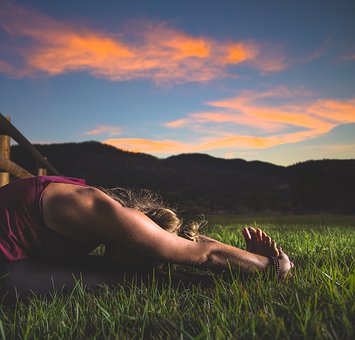Bone loss is serious business. Both men and women reach maximum bone mass around the age of 30 — and after that, it’s a matter of maintaining what you’ve got.
The National Institutes of Health estimate that 10 million Americans have osteoporosis and another 34 million suffer from its precursor, osteopenia. While it’s almost impossible to reverse these conditions, it’s possible to slow their effects — and yoga may be one of your strongest allies. Best of all, yoga can be done by anyone regardless of age or mobility level.
September is National Yoga Awareness Month and we’d like to take the opportunity to share two important ways in which yoga can help you maintain healthy bones.
 Yoga is a Weight-Bearing Exercise
Yoga is a Weight-Bearing Exercise
Yoga is a weight-bearing exercise, which is one of the best ways to enhance bone health. Weight-bearing exercises work by holding your body’s weight against gravity, putting a mild stress on your bones and forcing them to lay down new growth. In this way, yoga isn’t much different from other weight-bearing exercises, like walking or running.
Yoga differs in one big way from these “impact” exercises — it won’t damage cartilage or stress your joints. Instead, it helps lengthen the body’s muscles and holds them in place, using that tension to stress the bone and promote growth.
Yoga Promotes a Plant-Based Diet
Earlier this month, we talked about how fruits and vegetables promote bone health. There’s a strong correlation between a plant-based diet and bone density. Many Americans eat more protein than they need. But because protein makes the body create acid, eating too much can increase the amount of acid in your bloodstream. To neutralize it and rebalance your blood’s pH levels, your body pulls calcium from your bones. Eating a plant-based diet can avoid this imbalance — because fruits and vegetables naturally neutralize the acid caused by eating protein, your body won’t need to pull calcium from your bones.
Practice Safely
While yoga can be beneficial for bone health, it can also be detrimental if it’s not practiced correctly. For example, in someone suffering from osteoporosis, a forward bend can increase the likelihood of a spinal fracture by excessively stressing the front of your vertebrae. As with any exercise regimen, talk to your doctor before you begin.
